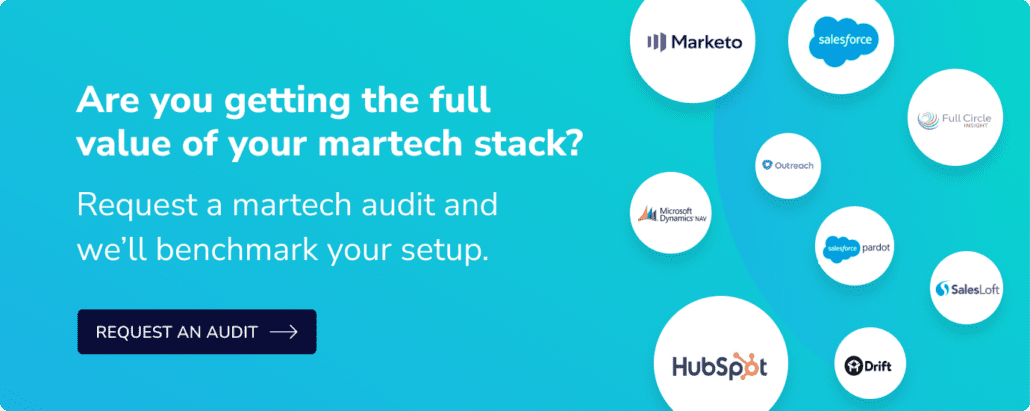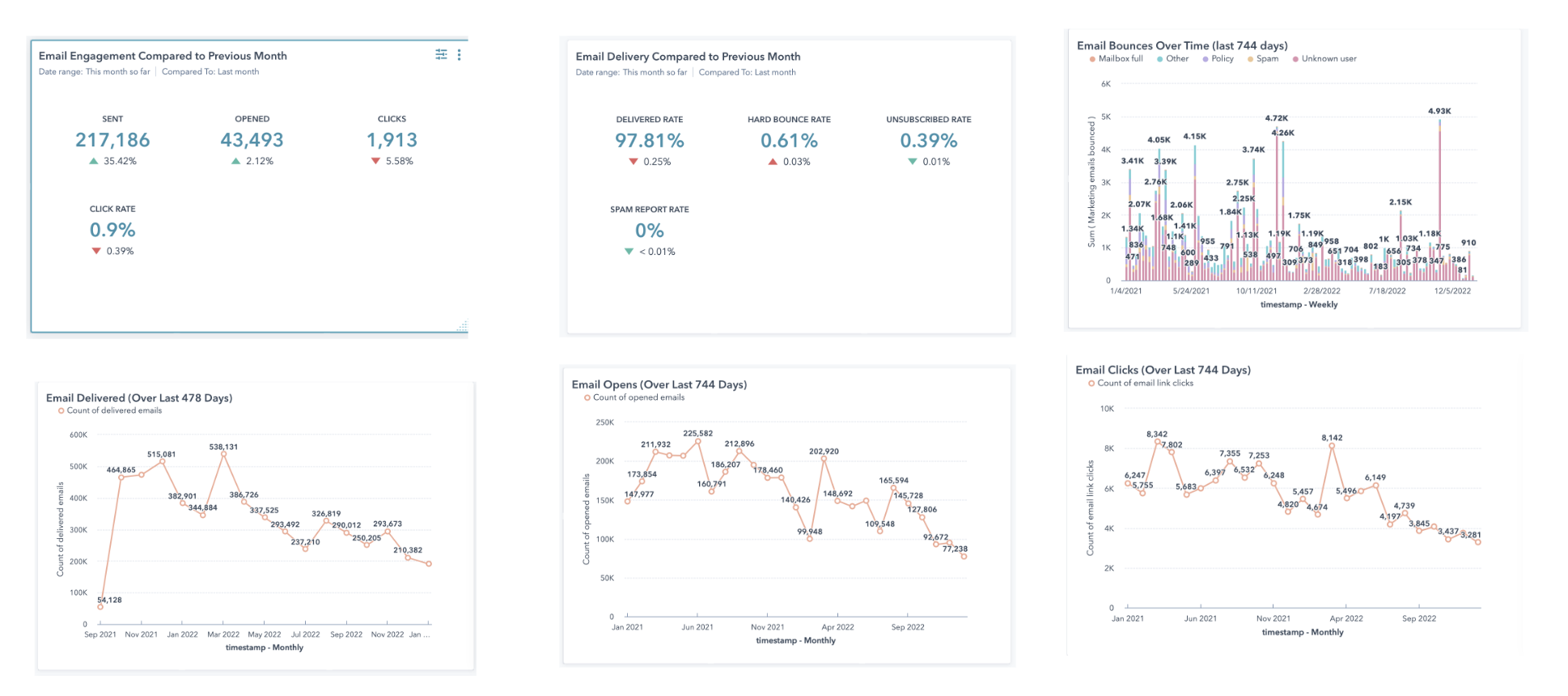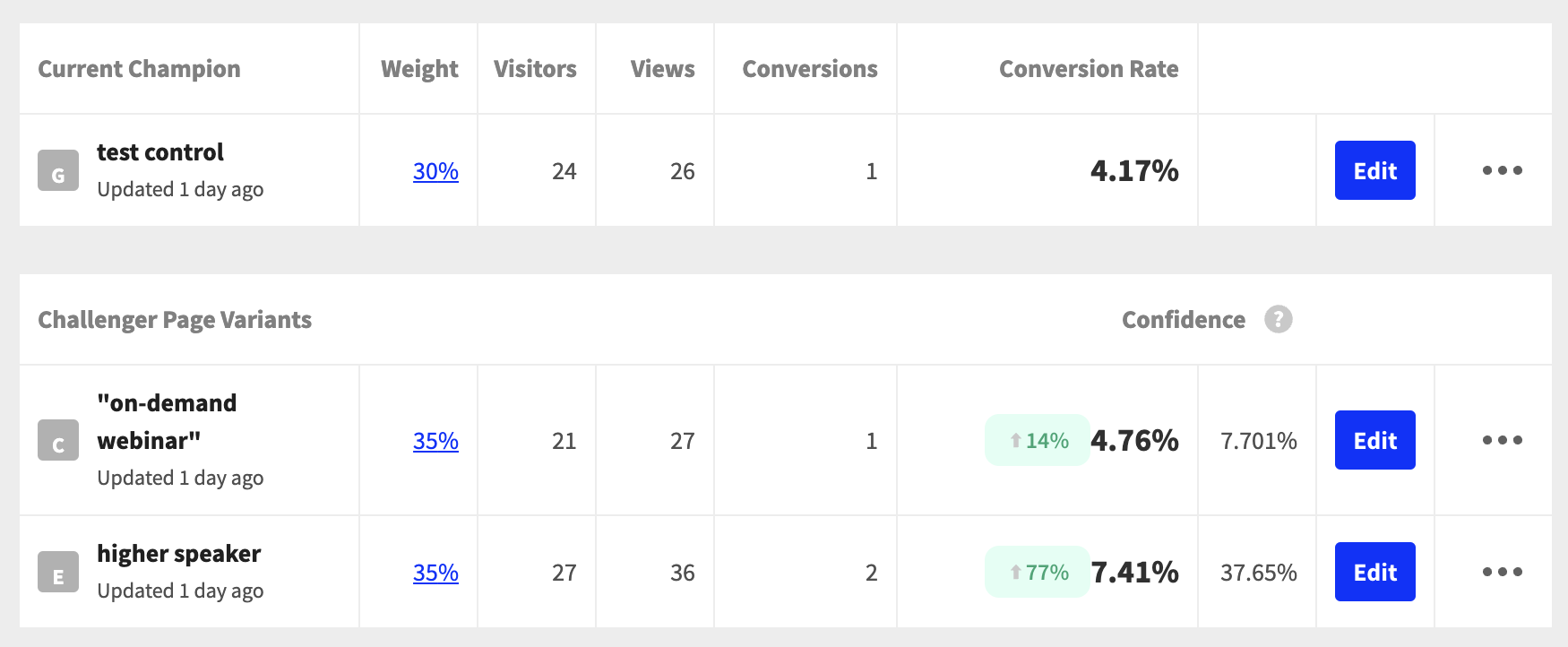Hitting the limits of your marketing database? Before scrounging up budget for the next tier, you may be able to trim tens of thousands of contacts. Here are some quick wins and deeper cuts to reduce the size of your marketing database.
>> Related How to: Improve Your Email Sender Reputation and Deliverability <<
In this post:
Easy/obvious ways to trim down your marketing database
These are no-brainers. You should feel confident about deleting the following cohorts from your marketing database. But! First ensure none of these folks have recent Salesforce activity, are part of an open Opp, or are actively being pursued by Sales. A contact with just a phone number and a name in Salesforce could still have value.
- Hard bounces (for Marketo users, that’s Category 2/Does Not Exist). (But don’t trash soft bounces – the contact might just have an out-of-office message on.)
- Contacts who lack an email address.
- Contacts with titles, industries, or geos you don’t care about. For example, you divested a product that focused on healthcare.
- Be wary of removing junior folks within verticals you care about (i.e. don’t delete developers if you sell to architects or team leads. People get promoted!)
- Similarly, if you only sell to US-based countries, there still might be deal influencers that work remotely in other countries.
- Internal contacts (i.e. people on your company domain). These are rarely cleaned out and can balloon.
More nuanced ways to reduce the size of your marketing database
These cohorts need some analysis (and perhaps some internal haggling) before you trash them:
- Old leads who were disqualified.
- Look at why they were disqualified. Often there’s a disposition in the picklist like “trash”. There may be other dispositions that are really unattractive.
- Or they were disqualified years ago and never came back in.
- Old contacts who have been in “nurture” for 3+ years. If they’re not engaging, it might be time to let them go.
- Duplicate contacts – although you’ll have to select “the winner” thoughtfully.
- Titles you really don’t need, like “student”.
- You can run your whole database through tools like BriteVerify and weed out emails that are invalid. Pricing starts at $0.0080 per verification. So, yes, you may spend $1000 to clean your database, but it could save you $20k in upleveling your MAP contract. (Bonus, this is also fantastic for your email deliverability!)
- Role-based emails like marketing@ or sales@…
- Inactive contacts from old list buys. This is also good for your domain health (not to mention karma).
- Contacts that are old (like 4 years) who aren’t associated with customer accounts or opportunities. This one feels riskier, but it might just be worth it.
- Anyone who hasn’t opened an email in the past 18 months.
- Contacts created by ZoomInfo, or uploaded directly by BDRs. These folks haven’t expressed inbound interest, so I wouldn’t send them mass emails from a MAP anyway.
- If you are really in a bind, you could explore a custom sync that only pulls a small segment of actively-nurtured contacts into your MAP. But treat this as a last resort because custom syncs are hard to maintain and can create a ton of duplicates if you’re not conscientious.
I recommend pulling each of these and taking stock of the numbers. How many contacts would we lose if we trash anyone who hasn’t opened an email in 6 months? A year? 18 months?
Can I delete unsubscribes from my database?
According to CAN-SPAM law, you’re not supposed to touch your unsubscribe list. Once someone has asked to be on the unsubscribe list, they’re supposed to always remain on it. If you delete your unsubscribes, and then buy a list with that contact on it, you’d really risk your domain.
However! Marketo has a feature called “durable unsubscribe” – Marketo actually keeps a record of unsubscribes for your instance so you can go ahead and delete them (and stop paying for them), and Marketo will never let them back in.
When in doubt
If you’re feeling skittish about any certain cuts, remember that you can download your database as a back up. If you dig too deep, you can still walk it back.
FAQs
What is the difference between a hard bounce and a soft bounce?
Hard bounce and soft bounce are terms used in email marketing to describe the status of email delivery attempts. These terms refer to different outcomes when an email is sent, and they are used to categorize the reasons why an email may not be delivered successfully.
What is the CAN-SPAM law?
The CAN-SPAM Act is a U.S. federal law that sets the rules for commercial email, establishes requirements for commercial messages, and gives recipients the right to opt out of receiving emails.
What is the difference between a marketable and non marketable database?
The terms “marketable” and “non-marketable” when used in the context of a database typically refer to the suitability of the data for marketing purposes. These terms describe whether the individuals or entities in the database are viable targets for marketing campaigns or if there are factors that make them less suitable.
What is a role-based email?
A role-based email address is an email address that is associated with a specific role or function within an organization, rather than an individual person. These email addresses are typically created for a particular job title, department, or function, and they are often shared among multiple individuals who perform that role.





